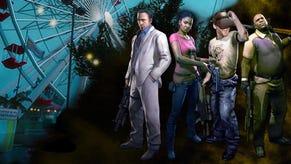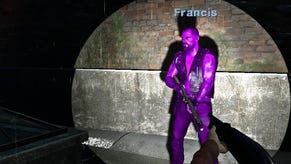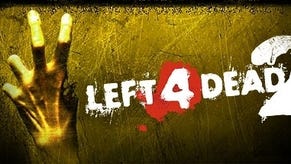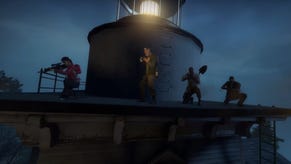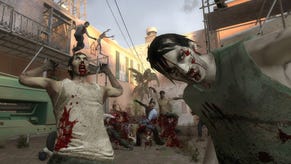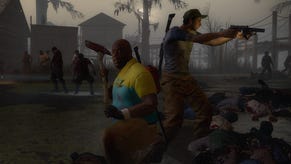Valve's Chet Faliszek
On how Left 4 Dead 2 works and why.
One of the greatest pleasures provided by recent Valve games has been the option to play through them again with the developers' commentary enabled, accessing the team's comments by nudging little speech bubbles dotted around the worlds of Portal, Episode Two and even Team Fortress 2. As anyone's who had the pleasure of reading through Raising the Bar will tell you, these guys know a thing or two about guiding you around a complex world and getting you to enjoy it for the reasons they intended.
With Left 4 Dead, the difficulty of doing so was greatly complicated by the dynamic nature of the challenges you faced as a player, many of which are regulated by the stunning AI director. Not only that, but the decisions made by four individual, human-controlled players on the survivors' side, and potentially by another four playing as special infected, threw the traditional static conditions faced by the game's designers further out of whack. It meant that Valve had to learn a lot of new approaches quickly (or, well, as quickly as possible). It's a challenge that's been amplified further by Left 4 Dead 2.
With that in mind, in addition to our thoughts about Left 4 Dead 2's new Dark Carnival campaign - shown for the first time just prior to the Penny Arcade Expo, and previewed and analysed elsewhere on the site - we sat down with Valve's Chet Faliszek to talk a bit about how the Washington developer faces down these challenges, and how it retains the first game's inviting simplicity in the process.
No. Outwardly I think people see that, but inwardly there's no change.
We looked at the issues we had and things we wanted to do, and realised they weren't something you could do piecemeal. Like, you can't introduce just one of the new creatures when they play off of each other. The Jockey doesn't make sense unless you have things like the Spitter, but then that's only solving one part of the problem - the other part of the problem the Charger solves.
Then you've got to have all those together. Then the AI director has to know how to use those. Then also you're saying that sometimes we want to have these kind of controls, so it becomes a whole rewriting of the director, a whole rewriting of the creature AI and how you add creatures. In Left 4 Dead 1, it would have been very difficult to add a new creature in a short period of time.
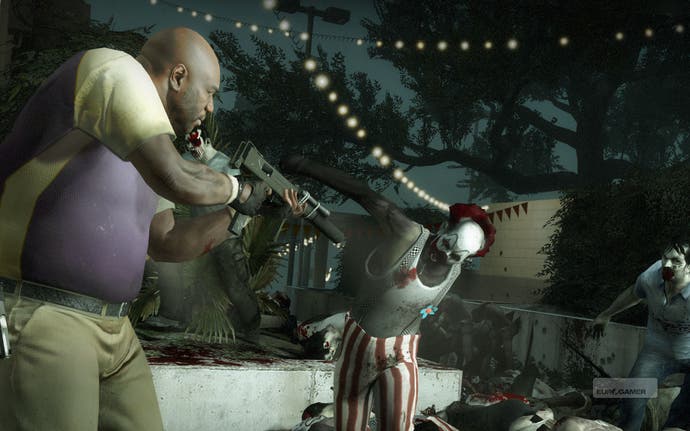
It's modular now! It's very modular now. We definitely worked on Left 4 Dead 2 with the idea that we wanted to be able to keep going back to what we do, and having that happen. That's not to diss Left 4 Dead 1 - we think it's great, I still play it - but Left 4 Dead 2 is taking all that, refining it, making it better, adding a ton more to it.
For example, often when you played Left 4 Dead 1, the AI director's already making it different every time, and making some of his choices based on how you're doing, but equally with that it would still kind of beat you up if you were doing poorly - it would want to keep the game interesting, and not just let you walk it with 1 health point, because that's not exciting.
So we wanted to take that idea and take it even further with the director 2.0. There's a campaign where weather events happen, and if you're doing really well you're going to be getting these, because you know how to handle them, and you hear the weather events coming, you hole up some place, you fight it off, you move on.
It has a bigger stable of creatures to send your way now. On top of that, some of the campaigns have... I think all the campaigns at least one map that reconfigures itself based on how you do in the previous map. So it will make paths harder, or shorter. One of the real simple things in Left 4 Dead is 'distance equals difficulty' - and so if the director also takes a path that's longer for you it's going to be harder, versus if you're doing poorly... I've had it once make a straight-line path across something, and it's like, 'You're insulting me. We're better that.'


